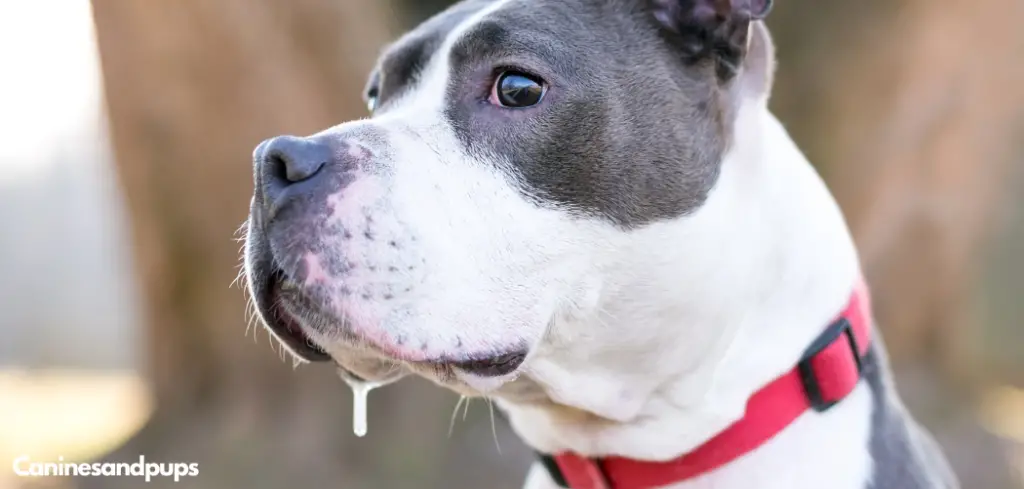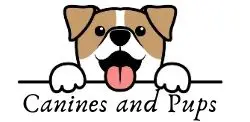If your dog is drooling and swaying at the same time, it can be alarming. These symptoms can indicate anything from mild nausea to serious neurological issues.
We outline what causes a dog to drool and sway, potential underlying health problems, and when it’s time to seek veterinary help.
Table of Contents
Here’s Why Dog Is Drooling and Swaying Happens
When a dog is drooling and swaying, it often indicates that something is affecting its balance and causing excessive saliva production, which can be signs of underlying health issues.
This combination of symptoms may result from vestibular disease, inner ear infections, nausea from motion sickness, toxin ingestion, neurological disorders, or severe pain such as from dental problems.
Drooling often accompanies nausea or oral discomfort, while swaying points to problems with the dog’s vestibular system or nervous system that control balance and coordination.
Because these symptoms together can indicate anything from mild upset to serious medical conditions, it’s important to monitor your dog closely

Causes of Dog Drooling and Swaying
1. Vestibular Disease
Vestibular disease is one of the most common reasons why a dog is drooling and swaying. This condition affects the vestibular system, which controls balance and spatial orientation.
In dogs, vestibular disease can be caused by:
Inner ear infections
Brain inflammation
Stroke
Tumors
Idiopathic vestibular syndrome (unknown cause, more common in older dogs)
Dogs with vestibular disease may suddenly develop symptoms like swaying, circling, and severe drooling due to nausea. This can look very similar to motion sickness.
2. Motion Sickness
If your dog becomes nauseous during car rides or any kind of motion, it may start drooling excessively and swaying or staggering.
Motion sickness can affect dogs of all ages, especially puppies whose balance systems aren’t fully developed yet.
It is often temporary and can improve with age, but repeated or extreme episodes should be addressed by a vet.
3. Ear Infections
Inner or middle ear infections can also cause your dog to sway and drool. This is due to inflammation of the structures that help maintain balance.
Ear infections are usually caused by:
Bacteria or yeast overgrowth
Allergies
Mites
Excess moisture
Foreign bodies like grass seeds
If your dog has an ear infection, you might also notice scratching at the ears, head shaking, redness, or an unpleasant smell.
Related: Understanding Dog Drooling and Runny Nose
4. Ingestion of Toxins
If your dog has ingested something toxic, it could lead to sudden symptoms including drooling and swaying.
Many toxins affect the nervous system and gastrointestinal tract.
Common toxic substances include:
Household cleaners
Rodenticides
Certain plants (e.g., lilies, sago palm)
Chocolate
Xylitol (a sugar substitute found in gum and candy)
Toxin ingestion can cause rapid onset of neurological symptoms such as tremors, seizures, vomiting, disorientation, and collapse.
If you suspect poisoning, seek emergency care immediately.
5. Dental Problems
Oral issues like a tooth abscess, gum disease, or something stuck in the mouth or throat can also lead to a dog drooling excessively.
While dental problems typically cause drooling, they may also make your dog reluctant to move, resulting in what looks like swaying or unsteady behavior, especially if they’re in pain or have an infected jaw.
Signs of dental issues include:
Bad breath
Swelling around the mouth or face
Difficulty eating or chewing
Dropping food from the mouth
6. Heatstroke
A dog that is overheated may begin panting excessively, drooling, and showing signs of disorientation or swaying.
Heatstroke in dogs can be life-threatening. It can develop quickly in hot weather, especially in flat-faced breeds like Bulldogs and Pugs, and dogs left in cars or exercised excessively during hot conditions.
Symptoms include:
Heavy panting
Bright red tongue and gums
Drooling
Vomiting
Unsteadiness or collapse
Immediate cooling and veterinary attention are crucial in cases of suspected heatstroke.
7. Seizure or Neurological Disorder
Sometimes, drooling and swaying may be signs of a mild seizure or neurological issue. Neurological disorders affect the brain, spinal cord, or nerves, and can cause symptoms such as:
Muscle tremors
Confusion
Loss of coordination
Unusual eye movements
Seizure-like episodes
This could be the result of trauma, brain tumors, inflammation, or degenerative diseases. Any suspected neurological issue should be assessed by a veterinarian promptly.
8. Nausea or Gastrointestinal Upset
If your dog is drooling and swaying and also showing signs like lip-smacking, vomiting, or licking floors, it may be feeling nauseous due to gastrointestinal upset.
Causes of nausea include:
Eating something they shouldn’t
Viral or bacterial infections
Pancreatitis
Motion sickness
Nausea can cause drooling and make a dog unsteady, particularly if it feels weak or dehydrated.
What to Do If Your Dog Is Drooling and Swaying
If you notice your dog is drooling and swaying at the same time, the best thing you can do is monitor them closely and seek veterinary advice. Here’s what you should do:
1. Check for Immediate Dangers
Look around for signs of poisoning — empty packaging, chewed plants, spilled chemicals.
Check your dog’s mouth for foreign objects or signs of dental pain.
Inspect ears for signs of infection.
2. Keep Your Dog Calm and Still
A dog that is unsteady should be kept in a quiet, safe area where it won’t fall or injure itself. Avoid offering food or water if nausea is suspected.
3. Contact Your Veterinarian
You should contact a vet urgently if:
The symptoms appeared suddenly and are severe
Your dog seems disoriented, lethargic, or confused
There’s vomiting, seizures, or collapse
You suspect toxin ingestion
Your dog is overheating or has been in hot conditions
Don’t attempt home treatments unless advised by your vet.
Diagnosing and Treating a Dog That Is Drooling and Swaying
Your vet may perform:
Physical exams (including neurological and ear checks)
Blood work
Imaging (X-rays, CT scan, or MRI)
Ear swabs or dental exams
Toxicology tests
Treatment will depend on the diagnosis and may include:
IV fluids for dehydration
Anti-nausea medications
Antibiotics for infections
Pain relief
Seizure management or anti-inflammatory drugs
Detoxification and supportive care for poisoning
Surgery for dental or neurological issues, if necessary
When to Worry About Dog Drooling and Swaying
If your dog is drooling and swaying occasionally but otherwise acting normal, it may not be serious. However, these symptoms should never be ignored if they:
Come on suddenly and severely
Are accompanied by other symptoms (vomiting, tremors, weakness)
Continue for more than a few hours
Involve loss of consciousness or seizure
In these cases, prompt veterinary care is essential.
Key Takeaway: Dog Is Drooling and Swaying
A dog drooling and swaying can be experiencing anything from mild nausea to serious neurological or toxicological emergencies. Common causes include vestibular disease, ear infections, motion sickness, toxins, and dental issues. Regardless of the underlying cause, these signs require attention.
If your dog is drooling and swaying, observe their behavior carefully and contact your vet as soon as possible. Timely action can make a big difference in ensuring your dog’s health and recovery.
Always trust your instincts—if something seems off, it’s better to be safe and have your dog evaluated by a professional.
